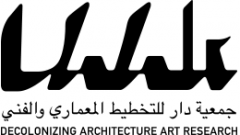A crucial issue in this project is land ownership. The buildings of the colony of P’sagot, much like in many such other colonies, are built upon land that either belonged to Palestinian families, i.e. private lands, or on public land that was used by Palestinians for recreation purposes or for the development of their public needs, i.e. public lands. There are various types of ‘private’ and ‘public’ lands but we will not expand on this issue at present. It depends on the deactivation of the Israeli land regime and the reinstatement of lands to their owners.
Tracing the land ownership in and around the settlement has lead to a challenging and unexpected part of the project – finding those families and individuals which own land on which part of the settlement is now located. Our investigation, still in process, traced some of the Palestinian landowners in the US, Australia, Kuwait, Saudi-Arabia, Iraq and of course in Palestine closer at hand. Their private and family histories are the intertwined histories of Palestine and of its displaced communities, forced out by the occupation and by economic and professional opportunities overseas. Our project thus seeks to re-discover the history of the land silenced by the massive development of the colony, allowing the fragments of land to “tell their story”. In this section of the project – the fate of the settlement to be decolonized – stands as the narrative devise for a multiplicity of private histories.
We engaged as well in interviews with the Jewish residents of the settlement, many of whom arrived from the US to settle the occupied territories.
In this growing archive of filmed interviews/testimonies, Jabal Tawil / P’sagot will be presented as the gravitational centre of various orbits, near and far, of displaced communities, individuals; migrations and family connections. The filmed archive of these interviews would thus create a microcosm of the conflict between Jews and Arabs and the intermeshed and reciprocal extra-territoriality of their diasporas that both fed the conflict and that was created by it.
Interview with a settler living inside the colony P’sagot
Interview with three residents of the village Al Bireh, near P’sagot
